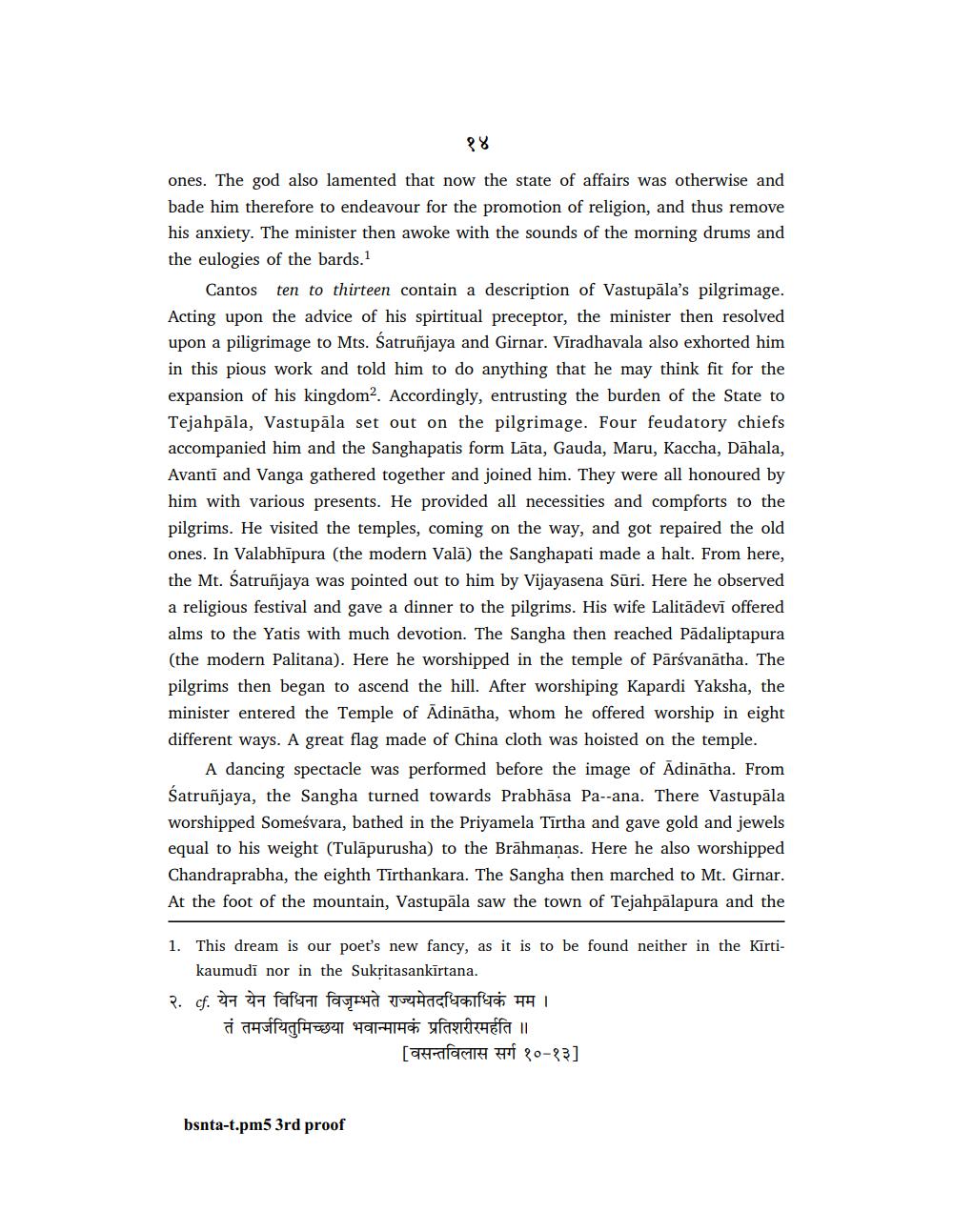________________
98
ones. The god also lamented that now the state of affairs was otherwise and bade him therefore to endeavour for the promotion of religion, and thus remove his anxiety. The minister then awoke with the sounds of the morning drums and the eulogies of the bards.1
Cantos ten to thirteen contain a description of Vastupāla's pilgrimage. Acting upon the advice of his spirtitual preceptor, the minister then resolved upon a piligrimage to Mts. Šatruñjaya and Girnar. Viradhavala also exhorted him in this pious work and told him to do anything that he may think fit for the expansion of his kingdom. Accordingly, entrusting the burden of the State to Tejahpāla, Vastupāla set out on the pilgrimage. Four feudatory chiefs accompanied him and the Sanghapatis form Lāta, Gauda, Maru, Kaccha, Dāhala, Avanti and Vanga gathered together and joined him. They were all honoured by him with various presents. He provided all necessities and compforts to the pilgrims. He visited the temples, coming on the way, and got repaired the old ones. In Valabhīpura (the modern Valā) the Sanghapati made a halt. From here, the Mt. Satruñjaya was pointed out to him by Vijayasena Sūri. Here he observed a religious festival and gave a dinner to the pilgrims. His wife Lalitādevī offered alms to the Yatis with much devotion. The Sangha then reached Padaliptapura (the modern Palitana). Here he worshipped in the temple of Pārsvanātha. The pilgrims then began to ascend the hill. After worshiping Kapardi Yaksha, the minister entered the Temple of Adinātha, whom he offered worship in eight different ways. A great flag made of China cloth was hoisted on the temple.
A dancing spectacle was performed before the image of Adinātha. From Śatruñjaya, the Sangha turned towards Prabhāsa Pa--ana. There Vastupāla worshipped Someśvara, bathed in the Priyamela Tirtha and gave gold and jewels equal to his weight (Tulāpurusha) to the Brāhmanas. Here he also worshipped Chandraprabha, the eighth Tirthankara. The Sangha then marched to Mt. Girnar. At the foot of the mountain, Vastupāla saw the town of Tejahpālapura and the
1. This dream is our poet's new fancy, as it is to be found neither in the Kirti
kaumudī nor in the Sukritasankirtana. २. cf. येन येन विधिना विजृम्भते राज्यमेतदधिकाधिकं मम । तं तमर्जयितुमिच्छया भवान्मामकं प्रतिशरीरमर्हति ।।
[04 astra f 80-83]
bsnta-t.pm5 3rd proof




